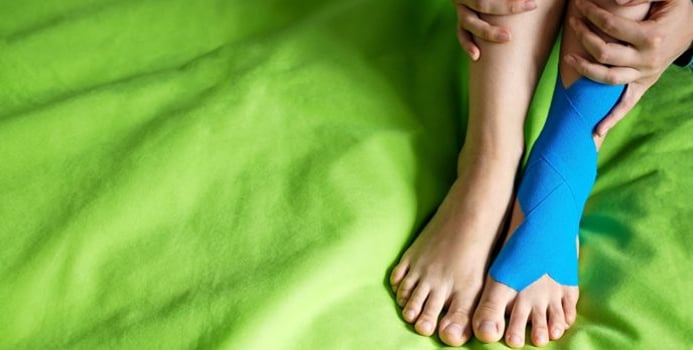Chances are you’ve seen someone with athletic taping over their joints and wondered if this tape really does anything to prevent further injury or help heal already injured tissue? Well, first you should understand what this taping does; it’s designed to be worn to hold the injured joint in place, thus preventing the movement, and reducing the swelling.
Taping is used for stabilization, but also to help reduce the pain, prevent the injury from reoccurring — especially if an athlete returns to the field without letting their injury heal properly — or to help with normal movement. This tape is meant to offer support and is generally used to support muscles, soft tissue, or joints that have been injured.
There are also different tapes used to strap an injury depending on what the purpose of the strapping is, these include rigid strapping tape, also known as athletic tape or sports tape, and it’s used when the joint needs to be kept firmly in place (it’s important to not strap too tightly as this could restrict circulation). This type of tape is typically used for injuries to joints or ligaments that are moderate or severe.
Then there is elastic strapping tape, which offers a degree of flexibility and is often made of cotton, allowing the skin to breathe.
And kinesiology tape, a stretchy tape, which according to Physioworks, is an improved version of elastic sports tapes, and is designed to support the muscles natural functions, without completely reducing the motion. There are also other benefits to this tape, and Active Health reports that these include; helping blood flow, reduced muscle cramping, promoting movement between layers of muscle and connective tissue, and improving blood flow and lymphatic drainage.
Although taping is used regularly by professional and amateur athletes, it is always advisable to consult a physiotherapist beforehand.
[Image via Shutterstock]



